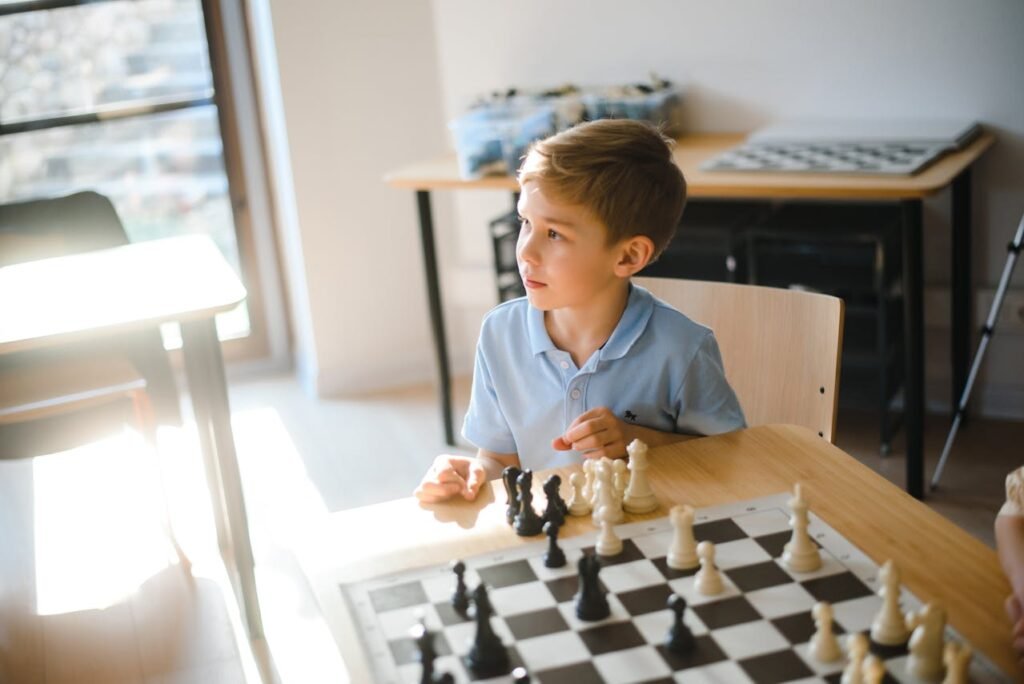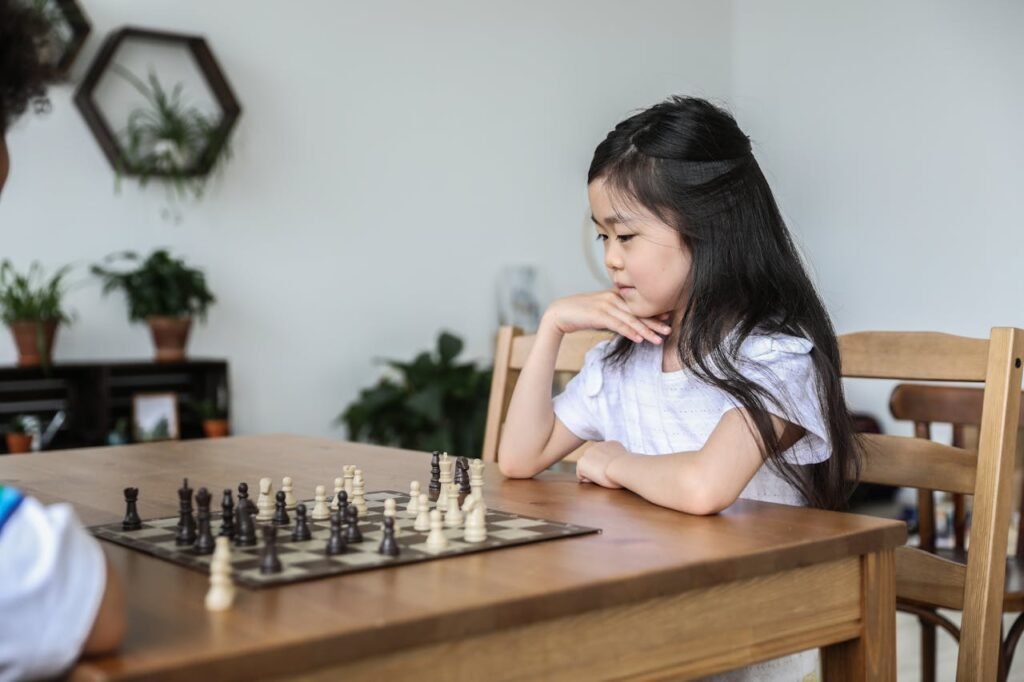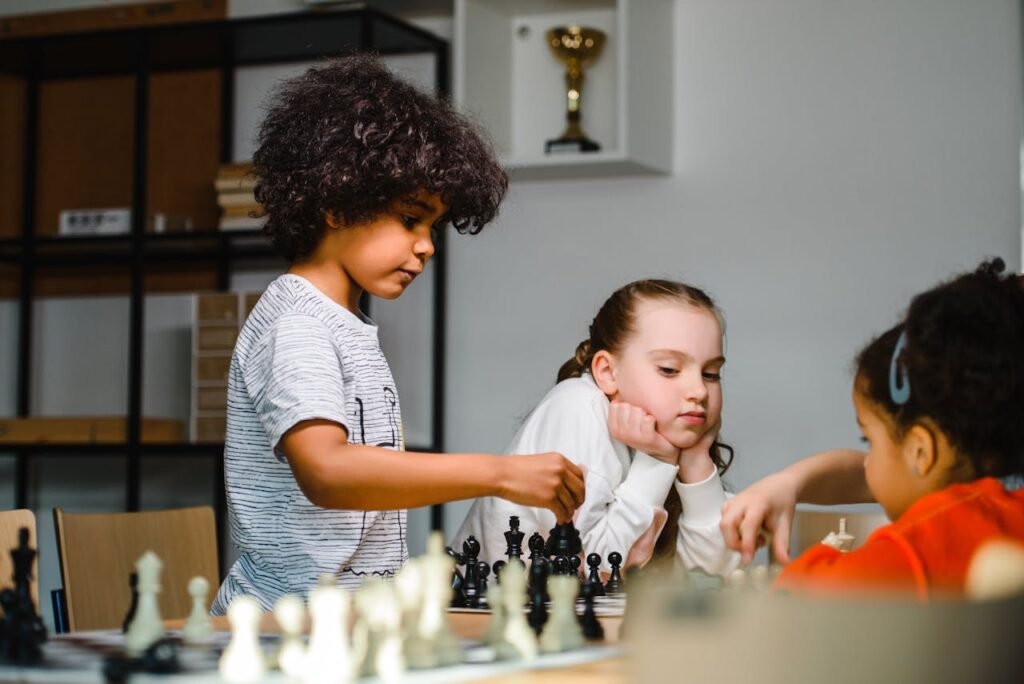Let’s be honest—fractions can feel tricky. And the words “common denominator” can sound like something out of a secret math club. But here’s the good news: it doesn’t have to be confusing.
In fact, finding a common denominator is just a fancy way of saying, “Let’s make the pieces match so we can work with them.” That’s it.
Imagine you’re trying to share a cake with your friends. One person cuts their cake into 4 pieces, and another into 8. It’s hard to compare, right? But if everyone cuts their cake the same way—into the same number of pieces—it suddenly becomes very easy to see who got more or less.
That’s what a common denominator does. It helps us make fractions easy to add, subtract, or compare by making all the “pieces” the same size.
What Is a Denominator, Really?
First, we need to understand what a denominator actually is. A denominator is the bottom number in a fraction. It tells us how many equal parts something is divided into. If a cake is cut into 4 slices, and you eat 1 slice, the fraction would be 1/4. The “4” tells us how many slices there are in total—that’s the denominator.
Think of it like this: if the numerator (the top number) is how many pieces you have, then the denominator is how many pieces make the whole. The denominator is the size of the pieces. Smaller denominators mean bigger pieces. Bigger denominators mean smaller, more slices.
So, What’s a Common Denominator?
Now let’s add the word “common.” A common denominator is a number that is shared by two or more fractions. When two fractions have the same bottom number, we say they have a common denominator.
Let’s say you’re working with 1/3 and 1/4. These fractions have different denominators—3 and 4. That means they’re cut into different sizes. One cake is cut into 3 big slices, and the other into 4 smaller ones. You can’t compare or combine them unless both cakes are cut the same way.
That’s where a common denominator comes in. It’s like saying, “Let’s cut both cakes into the same number of slices so we can work with them together.” Once you do that, it becomes easy to add, subtract, or compare the two.
Why Is This Important?
Fractions show up in real life all the time. When you’re baking, building, measuring, or even sharing things with friends, you’re often working with parts of a whole. If those parts are not the same size, it can get confusing fast.
Using a common denominator helps make sense of everything. It turns confusion into clarity. It allows you to combine different parts, see what’s more or less, and solve problems correctly. It’s like turning different types of puzzle pieces into matching ones—so they finally fit together.
Once you know how to find a common denominator, you can handle almost any fraction question with confidence. And guess what? It’s not as hard as it seems.
How to Find a Common Denominator

Now that we know what a common denominator is and why it matters, let’s learn how to actually find it. It’s easier than you think, and once you learn it, you’ll be able to use it over and over again.
Let’s say you have these two fractions: 1/3 and 1/4. The denominators are different, which means the pieces are different sizes. To work with them, we need to find a number that both 3 and 4 can fit into.
This number is called the Least Common Denominator (LCD). It’s the smallest number that both denominators can divide into evenly. You can think of it as the smallest number where both fractions can meet.
So how do you find it?
Start by listing the multiples of each denominator:
- Multiples of 3: 3, 6, 9, 12, 15, 18…
- Multiples of 4: 4, 8, 12, 16, 20…
Look at the lists. What’s the smallest number that appears in both? It’s 12.
So, 12 is your common denominator.
Turning the Fractions into Equivalent Fractions
Once you have your common denominator, the next step is to turn both fractions into new ones with that denominator. We don’t change the size of the amount—just the way we write it. This is called making equivalent fractions.
Let’s go back to 1/3 and 1/4. We found that 12 is the common denominator. Now we need to change each fraction so that the bottom number is 12.
To change 1/3 into twelfths, ask yourself: what do I multiply 3 by to get 12?
- 3 × 4 = 12 → So multiply the top number by 4 too: 1 × 4 = 4 → So, 1/3 = 4/12
Now do the same for 1/4:
- 4 × 3 = 12 → So multiply the top number by 3: 1 × 3 = 3 → So, 1/4 = 3/12
Now both fractions have the same denominator. You can easily add or subtract them:
4/12 + 3/12 = 7/12
Simple, right? Now you’re doing fraction magic!
Adding and Subtracting Made Easy
When the denominators match, you don’t have to worry about adjusting anything else. You just work with the numerators—the top numbers.
Let’s look at a few examples.
Example 1:
- Add 2/5 and 1/10
Step 1: Find the common denominator for 5 and 10. The smallest one is 10.
Step 2: Change 2/5 to something over 10.
- 5 × 2 = 10, so 2 × 2 = 4 → 2/5 = 4/10
Now add:
4/10 + 1/10 = 5/10, which can also be simplified to 1/2
Example 2:
- Subtract 5/6 from 3/4
Step 1: Find a common denominator. Multiples of 4: 4, 8, 12, 16… Multiples of 6: 6, 12, 18, 24… The smallest match is 12
- 3/4 = 9/12
- 5/6 = 10/12
Now subtract:
9/12 – 10/12 = -1/12
Yes, you can get negative fractions too—but that’s a story for another day!
Why Fractions Feel Confusing—and How Common Denominators Fix That
So many kids say, “Fractions are hard!” And that’s okay. You’re not alone if you’ve ever felt that way.
But here’s a little secret: the confusion usually comes from trying to work with fractions that don’t match. It’s like trying to fit a square block into a round hole. It just doesn’t work—until you shape the pieces to fit.
That’s exactly what finding a common denominator does.
When all the fractions speak the same “language,” everything starts to make sense. Suddenly, you’re not guessing. You’re not stuck. You’re in control of the problem.
And when you feel in control, learning becomes exciting.
Real-Life Example: Sharing Snacks with Friends
Imagine this: You bring a chocolate bar to school. You break it into 8 equal pieces and eat 3 of them. So you ate 3/8 of the bar.
Now your friend shows up with a similar bar—but she breaks hers into 4 pieces and eats 2 of them. She had 2/4.
Now the big question: Who ate more?
You can’t tell by just looking at 3/8 and 2/4. The pieces are different sizes. But when you find a common denominator, you can compare them fairly.
What’s a common denominator for 8 and 4? The smallest one is 8.
So:
- 3/8 stays the same
- 2/4 becomes 4/8
Now it’s clear: your friend ate 4/8, and you ate 3/8. So she had a little more chocolate. Not fair? Maybe. But totally clear now, thanks to matching denominators.
Recipes and Cooking: Fractions in the Kitchen
Let’s say you’re baking cupcakes, and the recipe calls for 1/2 cup of milk and 1/3 cup of oil. You want to know how much liquid you’re using altogether.
Can you just add 1/2 + 1/3? Not yet.
First, you need to make the pieces match.
What’s the common denominator for 2 and 3? It’s 6.
Now:
- 1/2 = 3/6
- 1/3 = 2/6
Add them together:
3/6 + 2/6 = 5/6
So, you’re using 5/6 of a cup of liquid. Just like that, the recipe makes sense. And your cupcakes come out perfect!
Comparing Homework Scores
Here’s another one. You got 7/10 on a quiz. Your friend got 3/5. Who did better?
They look different, but let’s compare fairly.
The smallest common denominator for 10 and 5 is 10.
- 7/10 stays the same.
- 3/5 becomes 6/10.
Now it’s easy: 7/10 is more than 6/10. You scored higher!
This kind of thinking helps with schoolwork, but also builds smart thinking skills for everyday life.
Common Denominators in Games and Puzzles
Ever played a board game where you collect coins, points, or tokens? Or maybe a video game where your health bar shows how much life you have left? Believe it or not, fractions and common denominators are behind a lot of those numbers.
Let’s say in your game, you collect magic coins. One kind of coin gives you 1/2 of a power-up. Another kind gives you 1/6 of a power-up. If you collect one of each, how much power do you have?
You can’t add 1/2 and 1/6 yet—they don’t match. But if you find a common denominator, it’s easy.
The smallest number both 2 and 6 fit into is 6.
- 1/2 becomes 3/6
- 1/6 stays the same
Now add:
3/6 + 1/6 = 4/6, which can also be simplified to 2/3
So you’ve got two-thirds of a power-up. You’re almost full!
Games often use fractions to track progress, energy, or stats. Once you learn how to spot those numbers and match them up, you get better at strategy, faster at decision-making, and way more confident.
Time Management with Fractions
Let’s look at time. You have 1 hour to do homework, play, and read. You decide:
- 1/2 hour for homework
- 1/4 hour for reading
How much time is left for play?
Let’s find out.
First, add what you’ve used:
- 1/2 = 2/4
- 1/4 stays the same
Now add:
2/4 + 1/4 = 3/4
You’ve used 3/4 of an hour, which means you have 1/4 hour left for play.
That’s 15 minutes—and that’s a fun way to turn fractions into something that actually helps your day!
Once you understand common denominators, you can plan your time better. You start thinking in pieces, and life becomes easier to organize.
Why Learning Common Denominators Builds More Than Just Math Skills
At first, it might seem like learning how to find a common denominator is just about passing a math test. But the truth is—it does much more than that.
Every time your child learns how to match fractions, simplify numbers, and solve a problem, they’re doing something much bigger: they’re building life skills.
🧠 Focus and Patience
Finding a common denominator takes careful thinking. It’s not a guessing game. It teaches kids to slow down, look for patterns, and try different ways until something works. That builds patience—and patient kids grow up to be focused thinkers.
💡 Smart Decision-Making
When a child learns to compare 3/4 and 5/6 by turning them into 9/12 and 10/12, they’re learning how to take a problem, break it into steps, and make smart choices. These are the same skills they’ll use later in life when budgeting, planning, or even cooking.
🗣️ Clear Communication
At Debsie, we always ask our learners to explain their answers. Why did they choose this denominator? How do they know the fractions are equal? This helps them get better at talking through their thinking—an amazing skill for school, interviews, and everyday life.
💪 Confidence That Lasts
The best part? When kids finally “get it,” their eyes light up. That “aha” moment stays with them. They start believing, “If I can do this, I can do anything.” That kind of confidence builds layer by layer, and it starts with small wins—like mastering common denominators.
How Debsie Makes Fractions Easy (and Fun)
At Debsie, we believe every child is capable of understanding even the trickiest math topics—if they’re explained the right way. Fractions, especially those involving common denominators, can feel confusing at first. But when we teach them using simple words, real-world examples, and interactive tools, everything clicks into place.
Here’s how Debsie turns fraction frustration into fraction fun:
1. We Use Real-Life Examples That Make Sense
Most kids don’t connect with abstract numbers. That’s why we use examples from everyday life—like pizza, chocolate bars, games, or even time on the clock. When a child sees that 3/4 of a cake is more than 2/5 of a cake, they understand why the denominators need to be the same before you can compare them.
We bring math into the world they already know. It’s not just numbers anymore—it’s their lunchbox, their weekend schedule, their screen time. That’s when learning sticks.
2. We Teach Slowly, Step-by-Step—No Rushing
Children learn at different speeds. Some might pick up the idea of common denominators quickly. Others might need more time, practice, and encouragement. At Debsie, we never rush through a topic.
Our expert teachers walk each child through:
- What a denominator is
- Why denominators need to match
- How to find a least common denominator
- How to rewrite the fractions
- How to add, subtract, or compare them
We use lots of guided practice, friendly feedback, and patient encouragement. If your child says “I don’t get it,” we smile and try again—until they say “Ohh! Now I see!”
3. We Gamify the Learning Process
What if fractions felt like a game, not a math class?
At Debsie, they do. Our platform is fully gamified, so every lesson feels like a mission. Kids earn points, unlock challenges, and get rewards for solving problems. They see their progress in real time, which keeps them excited and motivated.
For example:
- They might solve fraction puzzles to collect stars
- Match equivalent fractions in a card game
- Help a robot fix broken circuits using correct denominators
It’s not just learning—it’s learning that feels like play.
4. We Teach Children How to Think, Not Just What to Do
Many platforms teach kids to memorize steps. Debsie goes further. We teach understanding.
We ask questions like:
- “Why do we need the same bottom number?”
- “What happens if we don’t?”
- “How do we know this is the smallest denominator?”
This helps children build strong thinking skills, not just math skills. They learn how to break down problems, look for patterns, and explain their answers. This builds confidence—and that confidence lasts way beyond the math classroom.
5. We Offer Global, Personalized Learning
Debsie teaches children from all over the world—in 9+ countries and across 4 continents. Whether your child is just starting with fractions or getting ready for big exams, we match them with the right teacher and the right level.
Every child learns in their own way. Some are visual. Some love talking it out. Some need a bit more time. Our teachers are trained to spot those differences and adapt the lesson to your child’s style.
This is not one-size-fits-all. It’s your child’s learning journey, powered by experienced educators who care.
Final Thoughts: From Confusion to Confidence
Fractions don’t have to be scary. And common denominators? They’re not confusing when you learn them the right way. They’re just a way of making sure all the pieces match—so you can add, subtract, compare, and understand what’s really going on.
Once kids learn how to find a common denominator, something amazing happens: they feel smart. They stop guessing and start knowing. They look at problems and say, “I can do this.”
That’s what we do every day at Debsie.
We turn tricky topics into clear, simple steps. We show kids how to use math in real life—when they share food, manage time, play games, or work with friends. And we do it all in a fun, warm, and supportive way that makes learning feel joyful.
💡 So if your child has ever said, “I don’t get fractions,” we promise: they can.
And we’ll be there every step of the way to help them not just understand it—but love it.
🎓 Join the Debsie family today.
👉 Book your free trial class and give your child the chance to learn with expert teachers who care deeply about how they grow.
Read Next:



